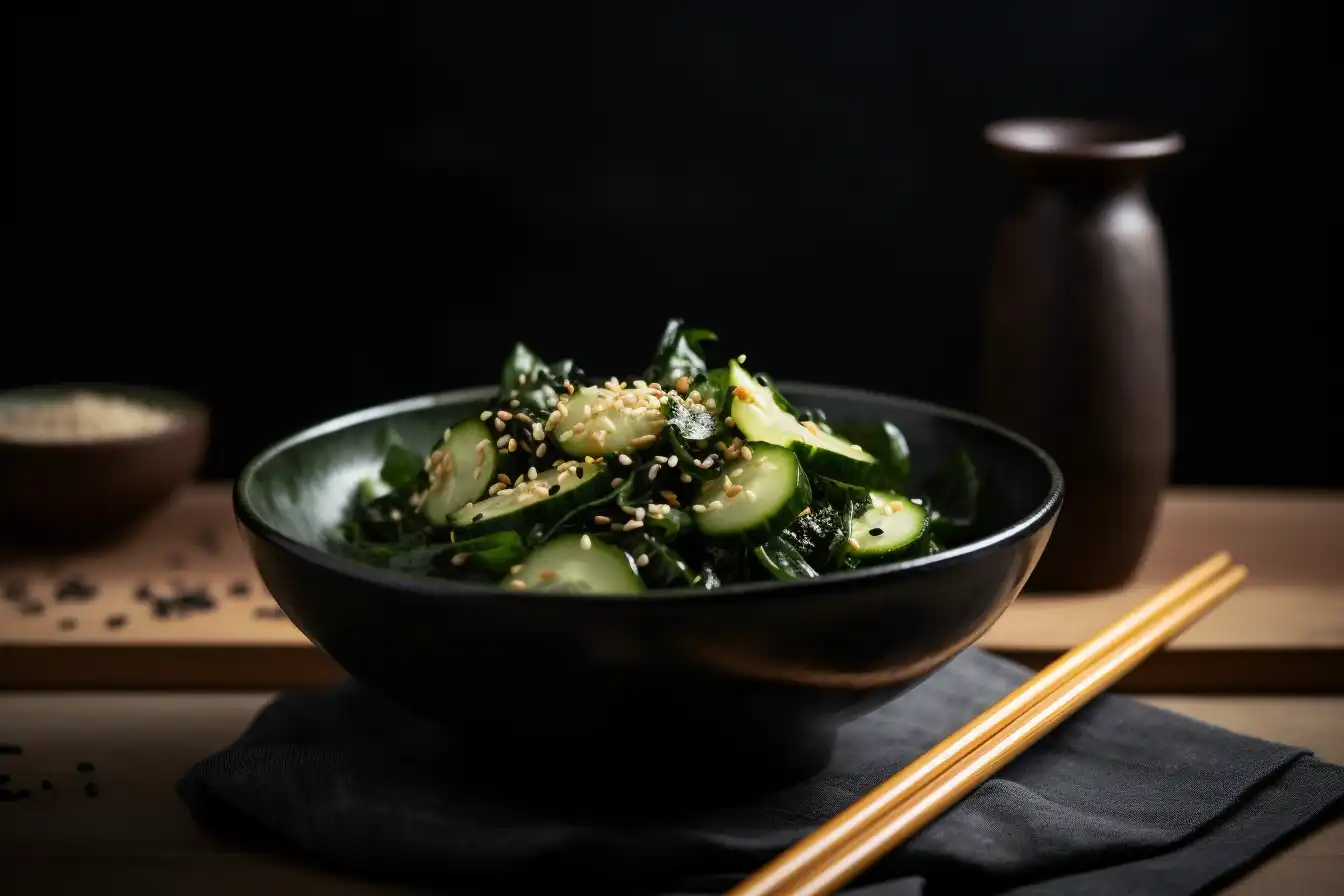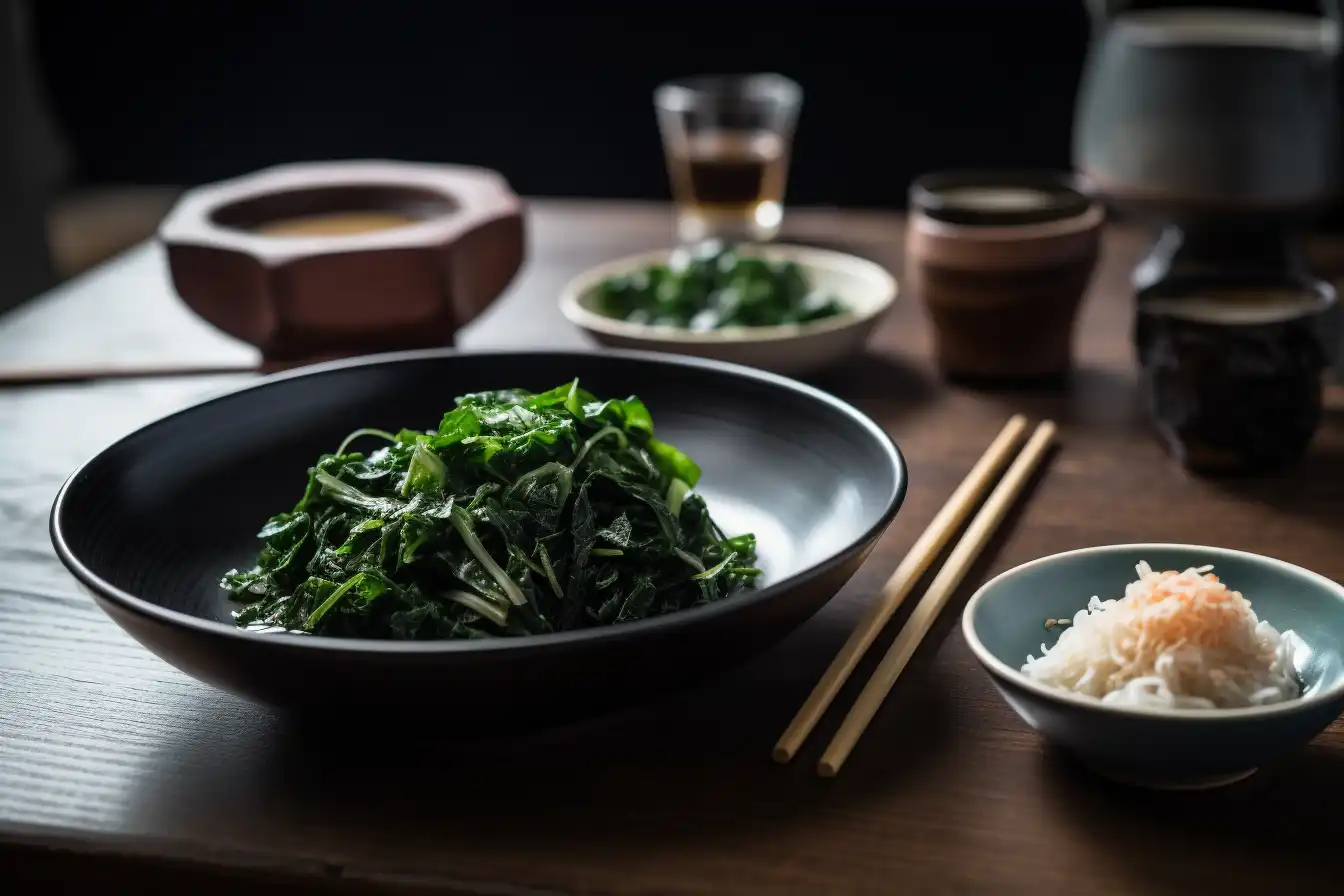What is Japanese Salad Made Of? Ingredients, Dressings, and Health Benefits
Japanese salads are a delightful fusion of vibrant colors, fresh ingredients, and distinctive flavors that make them stand out in global cuisine. Their unique charm lies in their ability to balance simplicity and complexity—often using a handful of carefully selected components that create an explosion of taste. Whether you’re drawn to the freshness of vegetables, the richness of sesame-based dressings, or the umami from seaweed, Japanese salads cater to a variety of palates. This article will take you through everything you need to know, starting with their cultural origins and extending to specific recipes and health benefits.
Part 1: Understanding Japanese Salads
The Definition and Cultural Significance of Japanese Salads
Japanese salads, or sarada as they are often called, are a harmonious blend of vegetables, proteins, and dressings. Unlike Western salads, which might heavily feature greens, Japanese salads frequently incorporate ingredients like daikon radish, seaweed, and tofu. These salads can be served as side dishes, starters, or even main courses.
Culturally, salads in Japan reflect a respect for seasonality. Ingredients like cucumbers and spinach are chosen not just for their flavor but for their alignment with the seasons. Traditional Japanese meals emphasize a balance of flavors, and salads play a critical role in achieving that harmony. Their freshness contrasts beautifully with heavier dishes, adding a light, refreshing touch to any meal.
Overview of Common Ingredients and Preparation Methods
While the ingredients of Japanese salads vary widely, some staples include cucumbers, carrots, wakame seaweed, and soy-based dressings. Simplicity is key, with an emphasis on enhancing the natural flavors of each component.
Preparation often involves minimal cooking. For instance, vegetables may be lightly blanched to retain their crunch and vibrant color, while proteins like tofu are seasoned delicately to complement the other ingredients. Garnishes such as sesame seeds or thinly sliced nori elevate both the flavor and presentation.
Historical Evolution of Japanese Salads
Origins and Influences Shaping Japanese Salad Cuisine
The story of Japanese salads begins centuries ago, rooted in the country’s agricultural traditions and Buddhist vegetarian practices. Early recipes often featured pickled or fermented vegetables like tsukemono, which were a practical way to preserve seasonal harvests.
With the influence of Chinese cuisine and later Western culinary trends, the concept of salads in Japan evolved. The introduction of miso-based dressings and mayonnaise brought a fusion of flavors that are now staples in Japanese cuisine.
From Traditional to Modern Salad Variations
Over time, Japanese salads transformed into versatile dishes, integrating international influences while maintaining their traditional essence. Modern variations like Kani salad (crab salad) showcase the adaptability of this culinary art form. Today, these salads are enjoyed both in homes and upscale restaurants, proving their enduring appeal.
Part 2: Core Ingredients in Japanese Salads
Fresh Vegetables in Japanese Salads
Vegetables form the foundation of many Japanese salads, bringing both color and texture to the dish. Staples like cucumbers, carrots, and daikon radish are prized for their crispness and ability to absorb the flavors of dressings. Spinach, often blanched to retain its vibrant green hue, is another popular choice, particularly in dishes like Ohitashi.
Preparation methods are as important as the ingredients themselves. Chefs often slice vegetables thinly or julienne them to create a uniform texture that looks appealing and is easy to eat. For example, they shred or spiralize daikon radish, a mild and slightly sweet root vegetable, into delicate strands that pair beautifully with tangy dressings.
The Role of Seaweed in Japanese Salads
Seaweed is a quintessential component of many Japanese salads, offering a unique umami flavor that’s hard to replicate. Wakame, a type of edible seaweed, is especially popular. Its silky texture and briny taste make it a favorite in salads like Sunomono—a dish that combines seaweed, cucumbers, and rice vinegar.
Other varieties, such as nori and kombu, also appear in salads, either as garnishes or in more elaborate preparations. These seaweeds not only enhance the flavor but also provide a nutritional boost, being rich in iodine, calcium, and vitamins.
Proteins That Elevate Japanese Salads
Proteins in Japanese salads often come from seafood or plant-based sources. Shrimp, octopus, and imitation crab (kanikama) are common additions, lending a delicate sweetness and firm texture to salads like Kani salad.
For vegetarian options, tofu and edamame are excellent choices. Silken tofu is often cubed and served chilled, paired with a drizzle of soy sauce or sesame dressing. Meanwhile, edamame, or young soybeans, provide a satisfying bite and a hint of nuttiness that complements other ingredients.
Noodles: The Unexpected Salad Base
Noodles may not be the first thing that comes to mind when you think of salads, but in Japanese cuisine, they’re a staple in many variations. Soba noodles, made from buckwheat, are a popular choice for chilled salads, often served with shredded vegetables and a light soy-based dressing. Sōmen noodles, thinner and made from wheat, offer a similar versatility.
When combined with fresh vegetables and proteins, these noodles create a heartier dish that can stand alone as a main course. The cool, slippery texture of the noodles contrasts wonderfully with the crunch of fresh vegetables, making noodle-based salads a refreshing option for warmer months.
Part 3: Traditional Japanese Salad Dressings
Wafu Dressing: The Quintessential Flavor
At the heart of many Japanese salads lies Wafu dressing, a simple yet versatile blend that perfectly complements fresh ingredients. Wafu, which translates to “Japanese style,” typically combines soy sauce, rice vinegar, vegetable oil, and sometimes a hint of grated ginger. This dressing is prized for its delicate balance of salty, tangy, and umami notes.
Variations of Wafu dressing can include additions like sesame oil or grated daikon for a richer or zestier flavor. Its adaptability makes it a favorite for salads featuring crisp vegetables such as cucumbers and radish.
Goma-ae: Sesame Dressing for Richness
Goma-ae, a sesame-based dressing, pairs beautifully with blanched vegetables, especially spinach. To create this dressing, grind roasted sesame seeds into a fine paste and mix them with soy sauce, sugar, and a small amount of sake. This combination results in a creamy, nutty flavor that enhances even the simplest ingredients.
Spinach goma-ae perfectly showcases this dressing’s appeal. The slightly bitter greens contrast with the sweet and savory notes of the sesame sauce, creating a harmonious dish. Goma-ae isn’t just a dressing; it’s a testament to how a few thoughtfully selected ingredients can transform a recipe.
Ponzu Sauce: A Citrus-Infused Delight
Ponzu, a citrus-based dressing, offers a refreshing twist with its tangy and slightly sweet flavor. Made with a base of soy sauce, citrus juice (such as yuzu or lemon), mirin, and dashi, Ponzu is light yet flavorful. Its brightness makes it an excellent choice for salads with seafood or lightly cooked vegetables.
A popular pairing is Sunomono, where Ponzu enhances the natural sweetness of cucumber and wakame seaweed, creating a harmonious and revitalizing dish. The subtle complexity of Ponzu ensures it doesn’t overpower the delicate ingredients it accompanies.
Experimenting with Fusion Dressings
Modern Japanese salads often feature fusion dressings that combine traditional elements with Western influences. For instance, Japanese mayonnaise, known for its creamy texture and tangy flavor, is a common base for dressings in salads like Kani salad.
While these dressings are less traditional, they highlight the creativity and adaptability of Japanese cuisine. Whether you prefer the boldness of sesame or the zest of citrus, there’s a Japanese dressing to suit every palate.
Part 4: Popular Japanese Salad Varieties
Sunomono: A Refreshing Vinegared Salad
Sunomono is a light and tangy Japanese salad that highlights the versatility of vinegar-based dressings. This dish often features crisp cucumbers, silky wakame seaweed, and proteins like shrimp or crab, all tossed in a simple dressing made of rice vinegar, sugar, and soy sauce.
The appeal of Sunomono lies in its balance of flavors. The sweetness of the vinegar dressing contrasts beautifully with the salty umami of soy sauce, while the textures of crunchy cucumber and soft seaweed create an enjoyable bite. Perfect as an appetizer, Sunomono sets the tone for a refreshing and satisfying meal.
Kani Salad: A Modern Favorite
Kani salad, or crab salad, is a popular modern dish that’s as visually appealing as it is delicious. Made with kanikama (imitation crab), julienned cucumbers, shredded carrots, and Japanese mayonnaise, this salad delivers a creamy, slightly sweet flavor.
Adding sesame seeds or a touch of wasabi to the dressing can bring a subtle nutty or spicy kick to the dish. Often served as a side or a sushi accompaniment, Kani salad has earned a place on Japanese menus worldwide, thanks to its approachable and satisfying taste.
Japanese Potato Salad: A Unique Twist on a Classic
Japanese potato salad takes the Western concept of potato salad and gives it a delightful twist. This creamy side dish uses mashed or lightly chunked potatoes mixed with Japanese mayonnaise, cucumbers, carrots, and sometimes onions or corn.
What makes it uniquely Japanese is the texture—less chunky and more cohesive than its Western counterpart—and the tangy sweetness of Japanese mayonnaise. The addition of thinly sliced cucumbers or pickled vegetables adds a refreshing crunch that balances the richness of the potatoes.
Ohitashi: Boiled Greens in Dashi Marinade
For those seeking a lighter, healthier option, Ohitashi is a must-try. This dish features blanched greens—most commonly spinach—marinated in a simple broth of dashi, soy sauce, and mirin.
Chefs serve the greens cold and often garnish them with bonito flakes or sesame seeds.The result is a delicate, flavorful salad that showcases the natural taste of the vegetables while adding the subtle umami of the marinade.
Part 5: Nutritional Benefits and Dietary Considerations
Health Benefits of Japanese Salad Ingredients
Japanese salads not only delight the taste buds but also offer numerous health benefits. The emphasis on fresh, minimally processed ingredients ensures that these dishes are nutrient-rich. For instance, vegetables like daikon radish and spinach provide vitamins A and C, fiber, and antioxidants that promote overall health.
Seaweed, a star ingredient in many Japanese salads, is a powerhouse of nutrients. It contains iodine to support thyroid function, along with calcium and magnesium to promote bone health. Additionally, seaweed contains unique compounds like fucoidan, which has been studied for its potential immune-boosting and anti-inflammatory properties.
For protein, seafood such as shrimp and octopus deliver omega-3 fatty acids, which are essential for heart and brain health. Plant-based proteins like tofu and edamame add a good dose of complete proteins, making Japanese salads versatile enough for vegetarians and vegans.
Incorporating Japanese Salads into Various Diets
One of the reasons Japanese salads are so popular is their adaptability to different dietary needs. Whether you follow a vegetarian, vegan, or gluten-free diet, you can tailor these salads to suit your preferences
- Vegetarian and Vegan Options: Replace seafood with tofu or additional vegetables. Many traditional dressings, like sesame and Ponzu, are naturally plant-based.
- Gluten-Free Adaptations: Opt for tamari instead of soy sauce, and ensure that noodles, if used, are gluten-free (e.g., soba noodles made from 100% buckwheat).
Another appealing aspect is their low-calorie nature. Japanese salads, rich in water-heavy vegetables and low-fat dressings, are an excellent choice for those watching their calorie intake without compromising on flavor.
Balancing Tradition and Modern Diet Trends
While traditional Japanese salads focus on pure, simple ingredients, modern adaptations have introduced a variety of superfoods and trendy elements, such as avocado or quinoa. These additions enhance the nutritional value while keeping the dishes aligned with contemporary dietary preferences.
Part 6: Frequently Asked Questions
What is Japanese salad made of?
Japanese salads typically combine fresh, vibrant ingredients like cucumbers, daikon radish, carrots, seaweed, and proteins like shrimp or tofu. The dressing often includes soy sauce, rice vinegar, or sesame oil to create the perfect balance of salty, tangy, and umami flavors. Depending on the variety, salads may also incorporate noodles, Japanese mayonnaise, or even pickled vegetables.
How do you make Japanese salad dressing?
Japanese salad dressings are simple yet flavorful. A classic Wafu dressing combines soy sauce, rice vinegar, mirin, and vegetable oil, while Goma-ae uses ground sesame seeds, sugar, soy sauce, and sake for a nutty richness. Ponzu, a citrus-infused dressing, is made with soy sauce, citrus juice, mirin, and dashi. Adjusting the proportions of these ingredients allows you to tailor the flavor to your liking.
What are common types of Japanese salads?
Popular types of Japanese salads include:
- Sunomono: A vinegared salad with cucumber and seaweed.
- Kani Salad: A creamy crab salad with cucumber and mayonnaise.
- Japanese Potato Salad: A unique twist with mashed potatoes and Japanese mayonnaise.
- Ohitashi: Blanched greens marinated in a soy-dashi blend.
Are Japanese salads healthy?
Absolutely! Japanese salads are incredibly nutritious due to their use of fresh vegetables, seaweed, and lean proteins. They are low in calories and high in essential nutrients like vitamins, minerals, and antioxidants. Additionally, seaweed provides iodine and omega-3s, while tofu and edamame offer plant-based proteins.
Can Japanese salads be made vegan or vegetarian?
You can adapt most Japanese salads for vegan or vegetarian diets with ease. Replace seafood with tofu, edamame, or extra vegetables. Swap fish-based dressings like dashi for kombu (seaweed) stock, which delivers a similar umami flavor without animal products.
Where can I find ingredients for Japanese salads?
You’ll find most ingredients for Japanese salads at Asian grocery stores or through online retailers that specialize in Japanese products. Many staples, such as soy sauce, rice vinegar, sesame seeds, and wakame, are also available in the international sections of large supermarkets. For specialty items like kanikama (imitation crab) or fresh daikon radish, visiting a dedicated Japanese or Asian market gives you the best chance of finding authentic ingredients.


